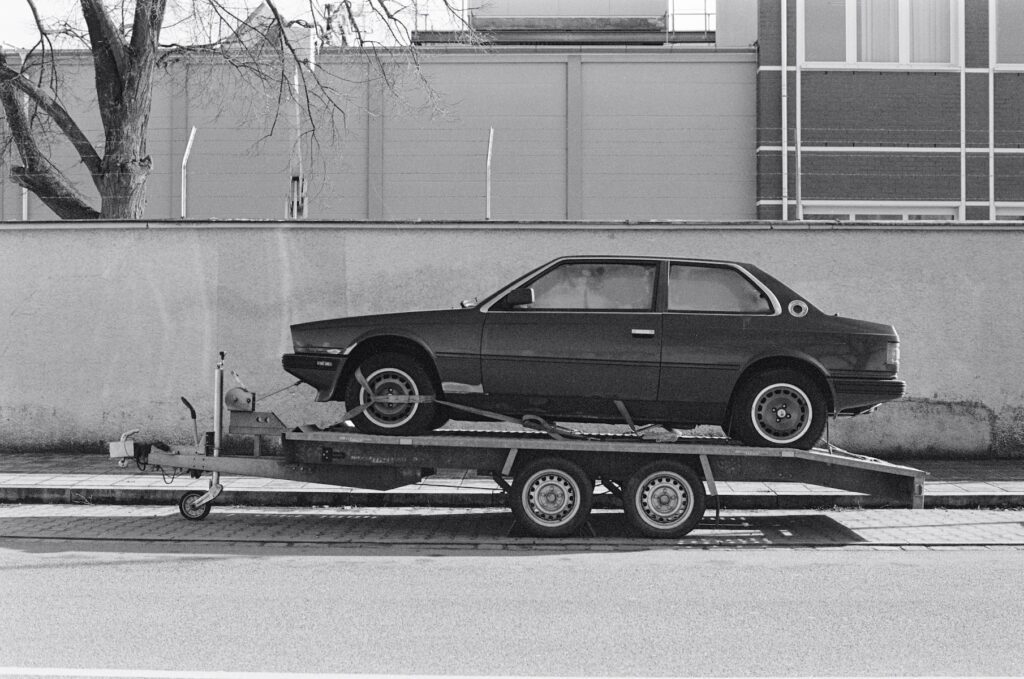
Shipping a non-running car poses unique challenges compared to transporting a fully operational vehicle. Whether the car is disabled due to mechanical issues, or it’s simply not drivable, special care must be taken to ensure it arrives safely at its destination. Unlike running vehicles, which can be driven onto a transport truck, non-running cars require careful handling to prevent further damage. This article aims to provide you with five essential tips for shipping a non-running car safely, helping you navigate the complexities of the process with confidence. By following these guidelines, you can ensure that your vehicle is transported securely and efficiently, minimizing the risk of any problems along the way.
Summary
Understand the Transport Options for Non-Running Cars
Shipping a non-running car requires selecting the appropriate transport method to ensure safe and effective handling. There are several options available, each with its own benefits and limitations. Understanding these options will help you make an informed decision based on your car’s condition and your specific needs.
A. Flatbed Trucks
Flatbed trucks are a common choice for transporting non-running cars. Their open design allows for easy loading and unloading of vehicles that cannot move on their own. The flatbed ensures that the car is secured properly during transit, reducing the risk of shifting or damage. This method is particularly effective for cars with severe mechanical issues or those that are heavily damaged.
Case Study: A customer needed to transport a classic car with a seized engine. Using a flatbed truck, the car was loaded with a winch and secured with straps, ensuring it arrived at the restoration shop without further issues.
B. Tow Trucks
Tow trucks are another viable option for transporting non-running vehicles. They can be equipped with various mechanisms, such as wheel lifts or flatbeds, to handle different types of non-running cars. Tow trucks are often used for shorter distances or when a flatbed truck isn’t available. It’s important to ensure that the tow truck is suited to your car’s specific condition and weight.
Case Study: An individual needed to move a non-running car from a driveway to a repair shop. A tow truck with a wheel lift was used to safely transport the car, minimizing any potential damage during the move.
C. Specialized Car Carriers
Specialized car carriers are designed to transport vehicles with extra care, making them an excellent choice for high-value or particularly fragile non-running cars. These carriers are equipped with advanced loading equipment and protective measures to ensure the car remains in pristine condition throughout the journey. They are ideal for long-distance shipping or when additional security is required. You can choice between open or enclosed car trailer, they will have a winch and load the car safely onto the trailer.
Case Study: A luxury car dealer used a specialized car carrier to transport several high-end vehicles, including non-running models, across state lines. The carrier’s advanced equipment and careful handling ensured that all cars arrived in excellent condition.

Preparing Your Non-Running Car for Shipping
Proper preparation is crucial when shipping a non-running car to ensure a smooth and damage-free transport process. By taking a few key steps before the car is loaded onto the transport vehicle, you can help safeguard your vehicle and avoid common issues that could arise during transit.
A. Check for Leaks and Fluids
Before shipping, it’s essential to inspect your non-running car for any leaks or fluid issues. Even if the car isn’t running, residual fluids such as oil, coolant, or brake fluid can pose risks during transport. Leaks can cause environmental damage and create hazards for the transport vehicle.
Tip: Have a mechanic check and address any leaks, and make sure the car’s fluid levels are appropriate for transport. Properly seal or drain fluids if necessary to prevent spills.
Case Study: A customer discovered a small coolant leak before shipping. By having it repaired beforehand, they avoided potential complications and ensured the car’s safe transport.
B. Disable the Alarm System
Non-running cars often have active alarm systems that may inadvertently trigger during transit. An alarm going off can be disruptive and may even cause damage to the vehicle or its surroundings. Disabling the alarm system ensures that it doesn’t activate during loading, transit, or unloading.
Tip: Follow the manufacturer’s instructions to disable the alarm system or consult a professional if you’re unsure how to do it.
Case Study: An individual failed to disable their car’s alarm before transport, which caused repeated disruptions during transit. Disabling the alarm in future shipments prevented this issue.
C. Document the Condition of the Vehicle
Documenting your car’s condition before shipping is a critical step in protecting yourself against any potential disputes regarding damage. Take detailed photos of the vehicle from multiple angles, including close-ups of any existing damage.
Tip: Keep a written record of the car’s condition, including any scratches, dents, or other issues, and provide this information to the transport company.
Case Study: A customer documented their car’s condition thoroughly and shared the details with the transport company. When minor scratches appeared upon delivery, they were able to resolve the issue quickly by referencing their documentation.
Choosing the Right Auto Transport Company
Selecting the right auto transport company is crucial when shipping a non-running car. The right company will have the expertise, equipment, and insurance to handle your vehicle safely and efficiently. Here’s how to choose a reliable transport company for your non-running car.
A. Research and Reviews
Start by researching potential auto transport companies and reading customer reviews. Online reviews can provide valuable insights into a company’s reliability, customer service, and overall performance. Look for companies with positive feedback specifically related to transporting non-running vehicles.
Tip: Check multiple review platforms and forums to get a well-rounded view of each company’s reputation.
Case Study: A customer reviewed several transport companies and found that one had consistently positive feedback from clients who had shipped non-running cars. Choosing this company ensured a smooth and reliable transport experience.
B. Verify Insurance and Licensing
Ensure that the auto transport company you choose has the necessary insurance and licensing to cover any potential damage to your vehicle. Verify that the company is licensed by the Department of Transportation (DOT) and check their insurance coverage to confirm that it meets your needs.
Tip: Request proof of insurance and licensing, and review the coverage details to ensure that it includes protection for non-running vehicles.
Case Study: An individual verified the insurance and licensing of their chosen transport company and discovered that it had comprehensive coverage for non-running cars. This verification gave them peace of mind knowing their vehicle was well-protected.
C. Get Multiple Quotes
Obtain and compare quotes from several auto transport companies. This will help you gauge the average cost of shipping a non-running car and ensure you’re getting a fair price. Be wary of quotes that seem unusually low, as they might indicate hidden fees or subpar service.
Tip: Ask for a detailed breakdown of the quote, including any additional fees or charges that may apply.
Case Study: A customer gathered quotes from three different transport companies and chose one that offered a competitive rate along with a clear, detailed breakdown of costs. This approach helped them avoid unexpected expenses and ensured transparent pricing.
Final Preparations and Loading
Ensuring that all final preparations are handled correctly will contribute significantly to the safe shipping of your non-running car. By following these steps, you can help prevent issues during loading and transport, making the process as smooth as possible.
A. Confirm Pickup and Delivery Details
Before the transport date, confirm all details related to pickup and delivery with the auto transport company. This includes the specific time and location for pickup, as well as the drop-off address and any special instructions. Clear communication helps avoid misunderstandings and ensures that both parties are aligned on expectations.
Tip: Double-check the contact information and confirm any arrangements in writing to prevent last-minute issues.
Case Study: A customer who confirmed their pickup and delivery details in advance experienced a seamless transport process. Any potential issues were addressed before the transport date, avoiding delays and confusion.
B. Ensure Proper Loading Procedures
Proper loading procedures are crucial for protecting your non-running car during transport. The vehicle should be carefully loaded onto the transport vehicle using appropriate equipment such as winches or ramps. Secure the car with high-quality straps or chains to prevent movement during transit.
Tip: Observe the loading process if possible and ensure that the vehicle is securely fastened and stable before transport begins.
Case Study: An auto transport company used a winch and heavy-duty straps to load a non-running car, ensuring it was stable and secure. This careful loading process prevented any damage during the journey.
